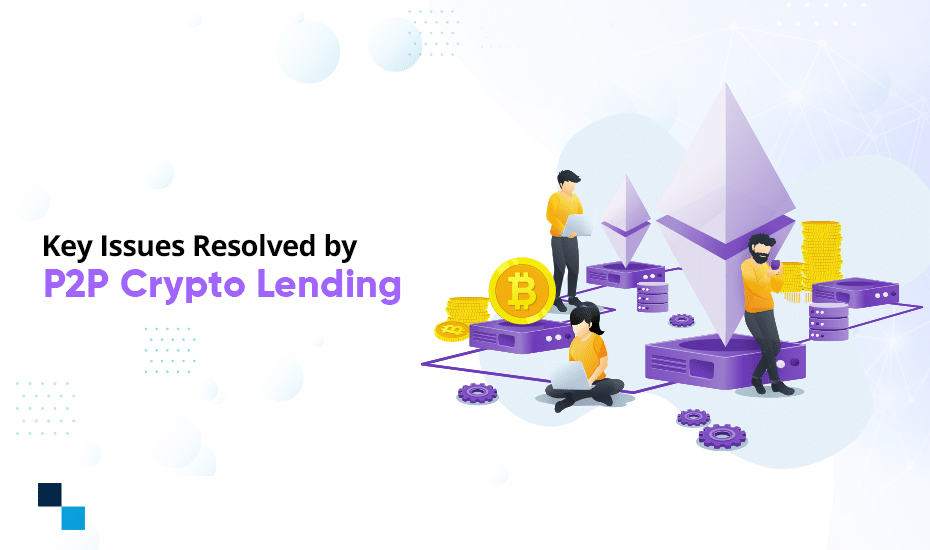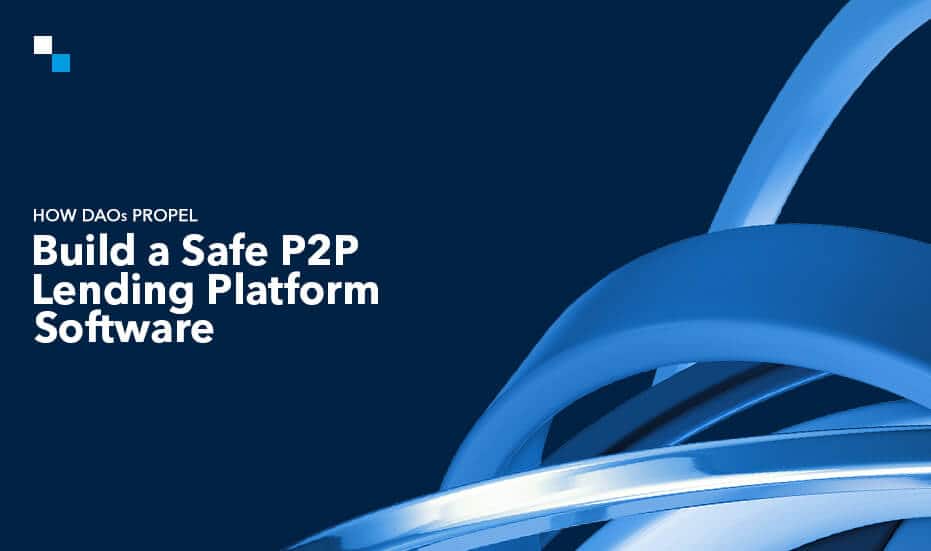How to Build a Crypto Wallet that can Engage and Monetize Users
July 29, 2020What to Expect in a Digital Asset Bank Solution Package
July 31, 2020Think of a Peer-to-peer (P2P) crypto lending exchange as the new kid on the block rolling out a simple solution for individuals and businesses to borrow funds for fulfilling their short-term requirements. They don’t even need to tell a reason. All they need to do is to use their collateral to get the money they want without the hassle they may face when applying for a loan from a regular financial institution.
How P2P exchanges help borrowers get funds almost instantly
When it comes to processing time and ease of transactions, a P2P crypto lending exchange is several times quicker and more convenient compared to a bank and Non-Banking Financial Company (NBFC). Anyone in need may get the required money almost instantly, while the process may generally take 10-15 days in case of a conventional institution.
P2P exchanges help lenders make better use of funds
At the same time, if anyone feels they have enough money to help others in the time of distress or fund their travel/business plans, they may register themselves on a P2P platform, lend their money at a specific interest rate, and begin attracting good returns on their capital that was otherwise lying unused with them. Lending money on a P2P platform is likely to get them better returns than equities and mutual funds.
It makes things easier for both borrowers and lenders
P2P crypto platforms are equally advantageous for borrowers as well as lenders. Any surprise that the global P2P lending market size was valued at $67.93 billion in 2019. By 2027, it may expectedly reach $558.91 billion, growing at a CAGR of 29.7%.
These platforms are all about connecting borrowers with individual lenders. If someone finds the operations of banks and NBFCs, or they find themselves illegible for getting loans for any reason, the P2P crypto lending exchange is like god-send for them. The loan amount and tenure may differ in P2P companies, but the basic tenet they work on is the same.
Taking P2P benefits to the public and the regulatory framework – the UK example
P2P platforms are legally mandated to conform to the regulations of the country where they operate. However, in many cases, borrowers or lenders may be of different nationalities, generating opposing views about jurisdiction in case of a dispute. But don’t forget that the legal landscape is still evolving and expect the dust to settle down in a few years.
Most countries have their own set of regulations for the countries operating out of their soil. In the UK, for instance, these companies have to work within the framework set by the FCA (Financial Conduct Authority). The FCA, as per the rules implemented on December 9, 2019, lays stress on investor protections. They have barred investors from putting in more than 10% of their investable assets into P2P lending. The rules also introduce an appropriateness test for the investors. Before a lending platform admits a new lender, they have to assess their knowledge and experience. They have also been directed to provide the minimum information to the investors.
Registration procedure for borrowers; much quicker than banks
Generally, the process begins with the borrowers registering on the platform by filling an online form and paying registration fees. They may also be required to upload the scanned copies of the documents. Some P2P players may also ask borrowers to provide their social media profile links to assess their profile and social behavior and collate data that their lenders may need to sanction a loan. Favorable data points may help them get a better deal.
Post registration, the borrower’s profile is verified and risk profile evaluated. Qualified borrower’s profile is listed along with the loan amount they require.
Registration procedure for lenders; act like banks now
Like borrowers, lenders too need to register on a P2P crypto lending exchange. They may also be needed to provide their bank account statements to help the platform determine their capacity to lend. Once the platform’s assessment team approves their names, they join the list of lenders. Their crypto assets and records are also taken into account.
Summing up
P2P lending exchanges make handling finances a bit better for borrowers as well as lenders. You can add a P2P crypto lending exchange to your array of services to make your platform even more popular. In case P2P crypto lending software cost is prohibiting you from moving ahead, look for a company that can assure you of quality solution within your budgetary restrictions.
Antier Solutions is a frontline company when it comes to developing a P2P crypto lending exchange. We provide a white label P2P crypto lending platform, and at the same time, we can build a custom P2P lending platform for you from the ground up.
Schedule a free demo of our white label P2P lending platform or connect with our subject matter experts to share your business needs.



